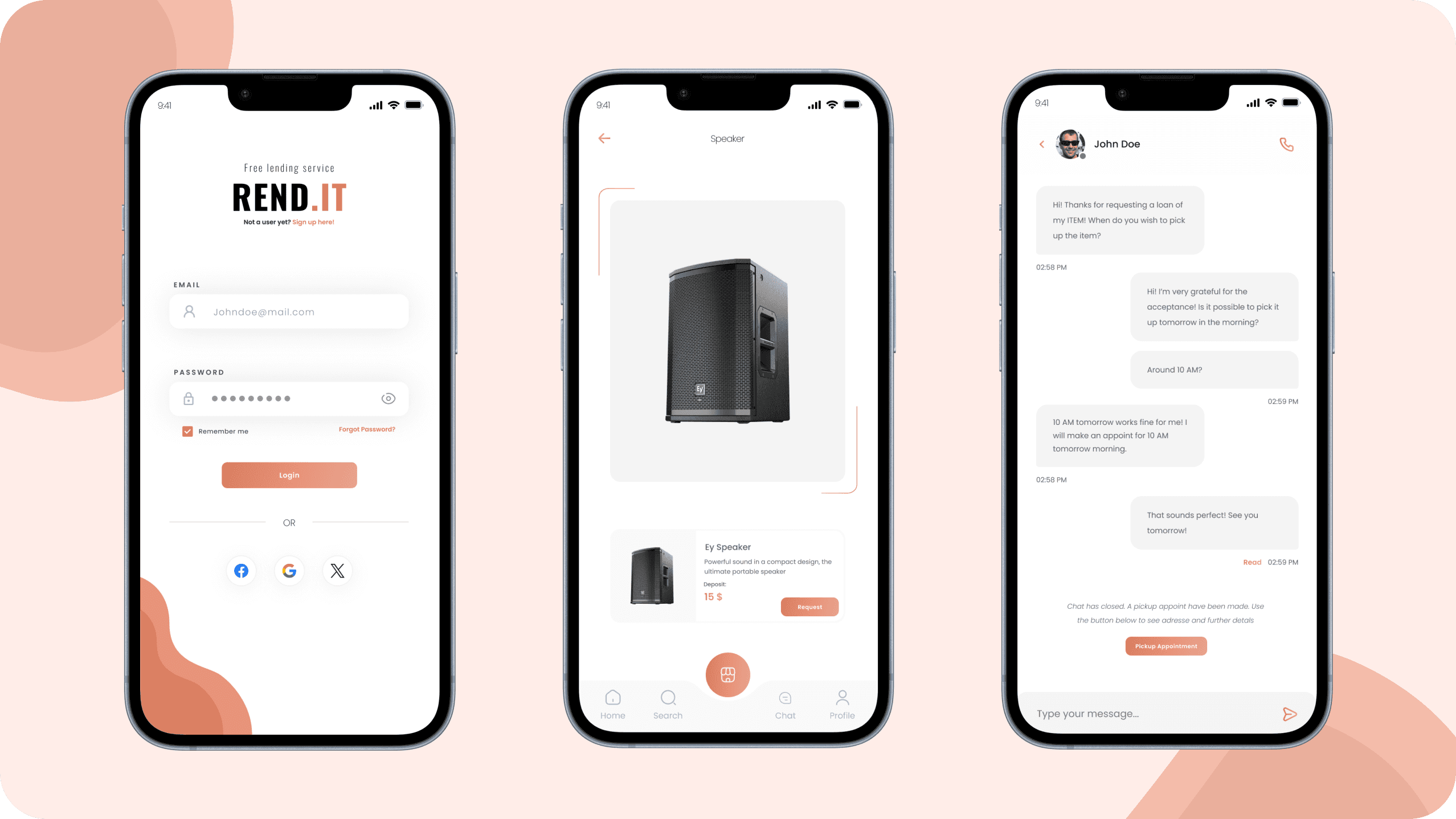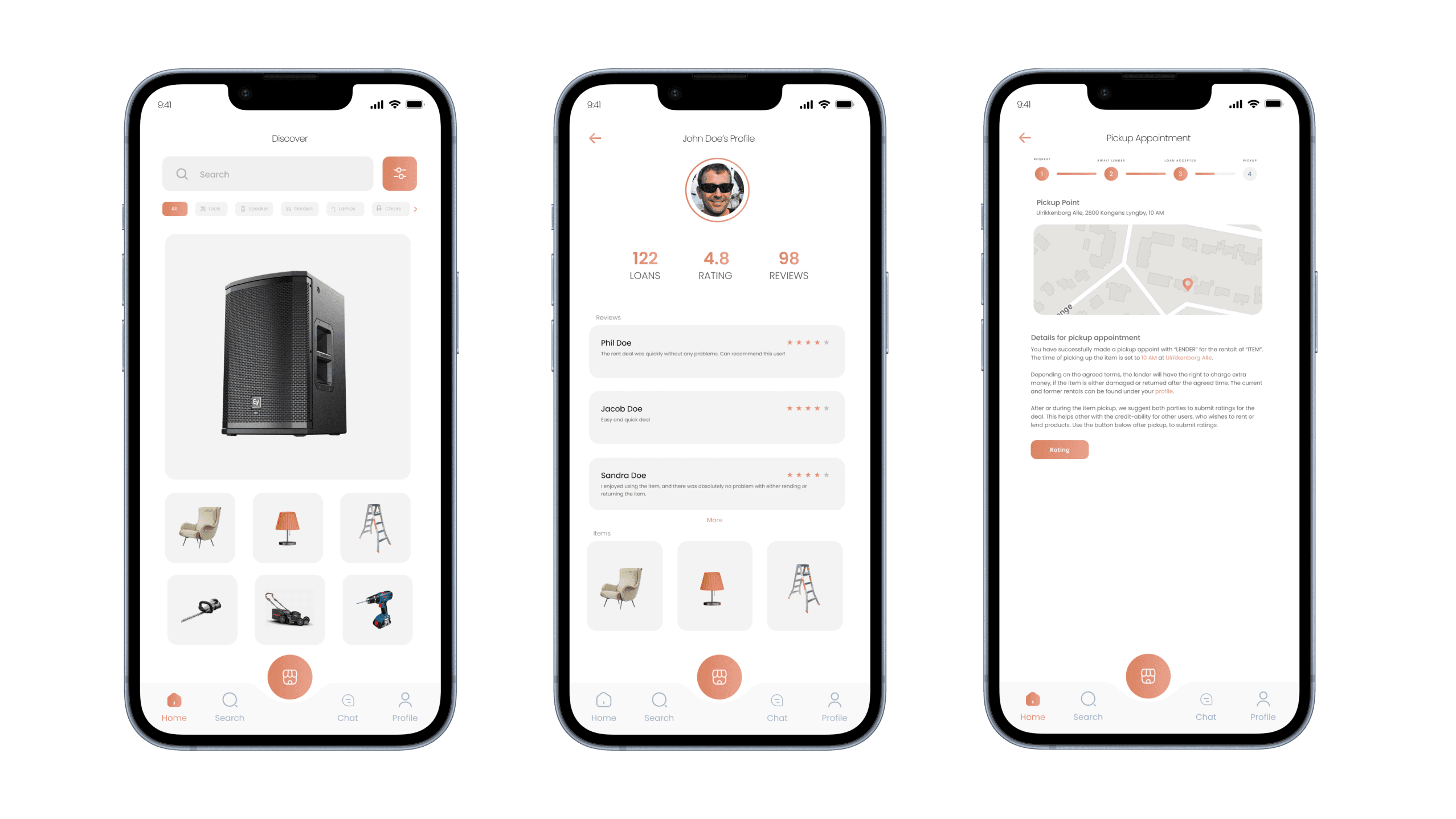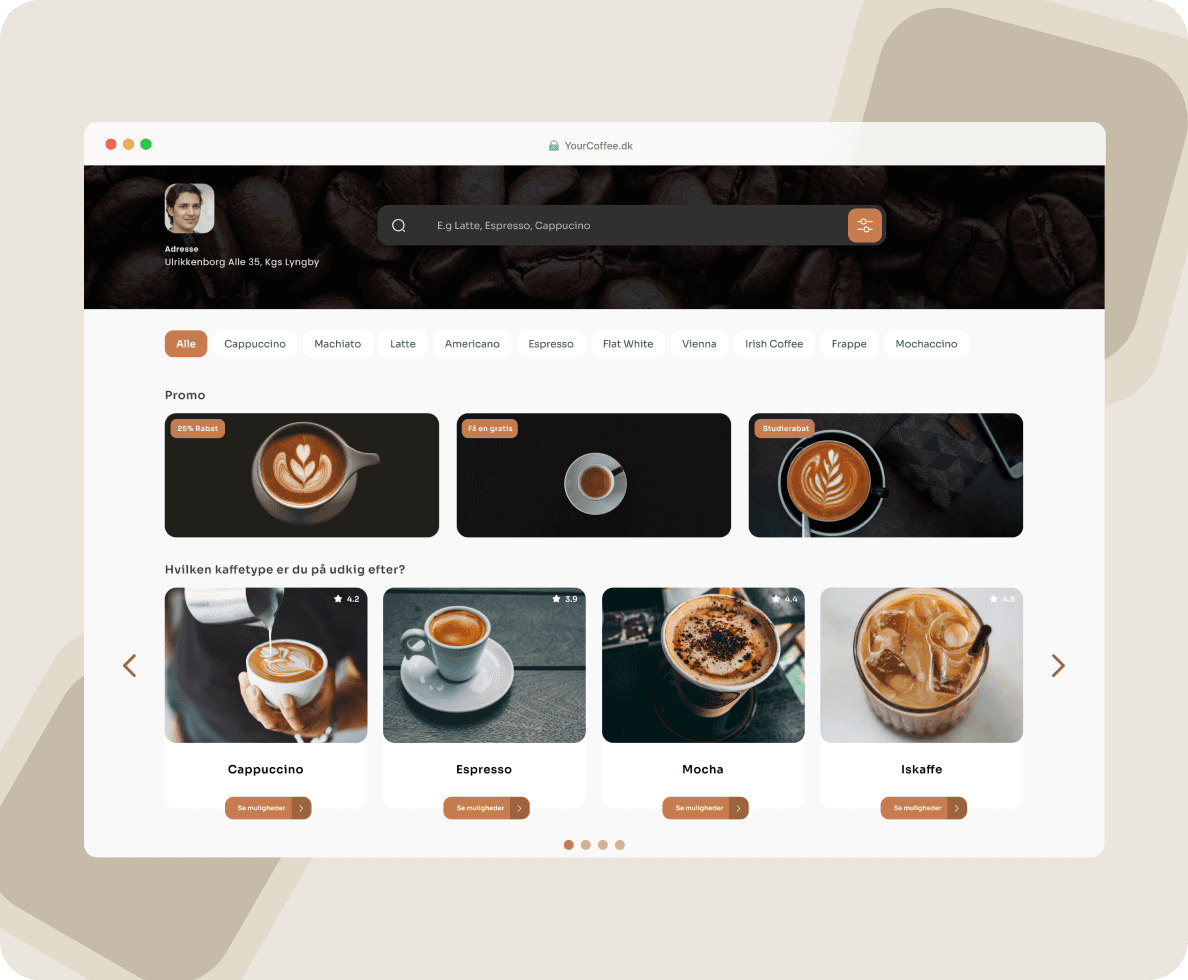Making renting seamless in a digital age
Inspired by the evolving lending economy and my personal experience growing up in a close-knit community, I designed this app concept. It reflects the tradition of sharing tools and electronics among neighbors, fostering a sense of unity within the community.
The Problem
The task was to design an app, Rend.it, for a service that revolves around human interaction.
Reliability: Renting out products in private highly relies and reliability and trust.
Communication: Communication between users was essential to increase trust among all parties.
Making it effortless and easy: One of the goals were to make a complex process of renting out a product easy and effortless, but how can you make a complex task as such feel seamless?
Approach
The project was tackled through three essential steps:
Feature Mapping: Identifying and mapping the key features necessary to support the project’s goals.
Interface Design: Developing a comprehensive design guide, covering everything from color schemes and typography to icons and shapes.
Sketching & Wireframing: Before moving into Figma, I started with hand-drawn sketches to create a raw concept, which formed the foundation for the Figma prototype.
Results
The Rend.IT project yielded in a full prototype
User-Friendly Interface: The final prototype in Figma delivered a clean and intuitive interface, making the complex task of renting products feel simple and effortless for users.
Enhanced Communication Tools: Key communication features were seamlessly integrated, fostering trust and transparency between users through streamlined interactions.
Scalable Design System: The comprehensive design guide ensured consistency across the app’s visual elements, making it easy to scale and adapt the design for future updates.
Conclusion
The Rend.it project was a self-initiated, conceptual venture aimed at tackling the challenges of product rentals through a digital platform. Though it remained a prototype, the project provided valuable insights into key areas like building trust, improving communication, and simplifying complex tasks. These learnings have strengthened my approach to designing user-friendly, interaction-based platforms.



